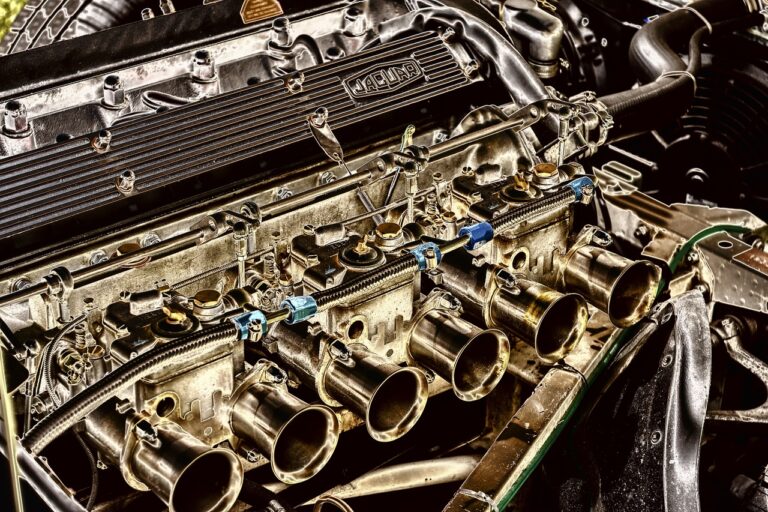Automotive Tooling: Trends in Blow Molding
allpaanel, laser247 com app login, yolo 247 com login: Automotive Tooling: Trends in Blow Molding
Automotive tooling plays a critical role in the manufacturing process of vehicles. One of the key processes in automotive tooling is blow molding, which is used to create various components such as fuel tanks, air ducts, and storage containers. In recent years, there have been several trends in blow molding that are shaping the way automotive components are produced.
In this blog post, we will explore some of the latest trends in blow molding for automotive tooling and how they are revolutionizing the industry.
1. Lightweighting
One of the most significant trends in blow molding for automotive tooling is the focus on lightweighting. As automakers strive to improve fuel efficiency and reduce emissions, they are looking for ways to make vehicles lighter without compromising on safety or performance. Blow molding allows manufacturers to create lightweight components that are strong and durable, helping to achieve these goals.
2. Material Innovation
Advancements in material technology have also had a significant impact on blow molding for automotive tooling. New materials with improved properties, such as enhanced strength and heat resistance, are being developed to meet the growing demands of the automotive industry. These materials are enabling manufacturers to create components that are more durable and can withstand harsh operating conditions.
3. Complex Geometries
With the advancements in blow molding technology, manufacturers are now able to produce components with increasingly complex geometries. This allows for greater design flexibility and enables the creation of components that were previously impossible to manufacture using traditional methods. Complex geometries not only enhance the aesthetic appeal of automotive components but also improve functionality and performance.
4. Automation
Automation is another key trend in blow molding for automotive tooling. Automated systems are being increasingly adopted to streamline the manufacturing process, reduce labor costs, and improve efficiency. Robotics and computer-controlled systems are being integrated into blow molding machines to enhance precision and consistency in the production of automotive components.
5. Sustainability
Sustainability is a growing concern in the automotive industry, and blow molding is no exception. Manufacturers are actively seeking ways to reduce waste, energy consumption, and environmental impact in the production of automotive components. By incorporating sustainable practices, such as using recycled materials and optimizing energy usage, manufacturers can create more eco-friendly products that align with consumer preferences.
6. Integration of Smart Technologies
The integration of smart technologies, such as IoT sensors and data analytics, is transforming blow molding for automotive tooling. These technologies enable manufacturers to monitor and control the production process in real-time, leading to improved quality control and predictive maintenance. By harnessing the power of data, manufacturers can optimize production efficiency and reduce downtime, ultimately enhancing the overall manufacturing process.
7. Customization
Personalization and customization are becoming increasingly important in the automotive industry, and blow molding is no exception. Manufacturers are now able to offer customized solutions to meet the unique needs and preferences of consumers. Whether it’s a specific color, texture, or design, blow molding technology allows for the creation of personalized automotive components that cater to individual tastes.
8. Cost Efficiency
Cost efficiency is always a top priority for manufacturers, and blow molding technology is helping to achieve this goal. By optimizing the production process, reducing material waste, and improving efficiency through automation, manufacturers can lower production costs and remain competitive in the market. Cost-efficient blow molding solutions enable manufacturers to offer high-quality automotive components at competitive prices.
FAQs
Q: What is blow molding?
A: Blow molding is a manufacturing process used to create hollow plastic or metal components by inflating a heated plastic material into a mold. This process is widely used in the automotive industry to produce various components such as fuel tanks, air ducts, and storage containers.
Q: How does blow molding differ from injection molding?
A: While both blow molding and injection molding are used to create plastic components, they differ in the way the material is formed. In injection molding, the material is injected into a mold cavity, while in blow molding, the material is inflated into a mold cavity to create hollow components.
Q: What are the benefits of blow molding for automotive tooling?
A: Blow molding offers several benefits for automotive tooling, including lightweighting, material innovation, complex geometries, automation, sustainability, integration of smart technologies, customization, and cost efficiency. These trends are shaping the way automotive components are produced and are driving innovation in the industry.
In conclusion, blow molding technology is evolving rapidly, with manufacturers embracing new trends and technologies to stay ahead of the competition. From lightweighting and material innovation to customization and cost efficiency, these trends are revolutionizing the automotive tooling industry and shaping the future of automotive manufacturing. By staying abreast of these trends and leveraging advanced blow molding solutions, manufacturers can create high-quality, sustainable, and cost-effective automotive components that meet the demands of today’s consumers.







